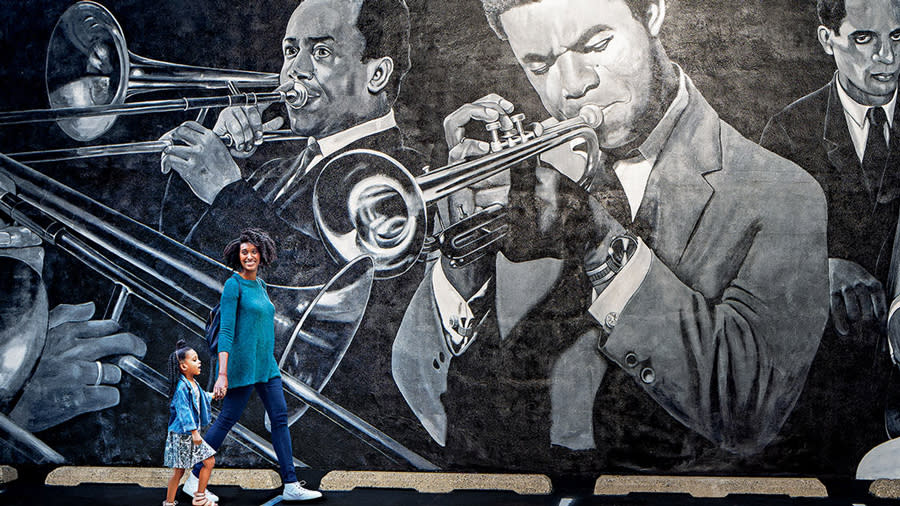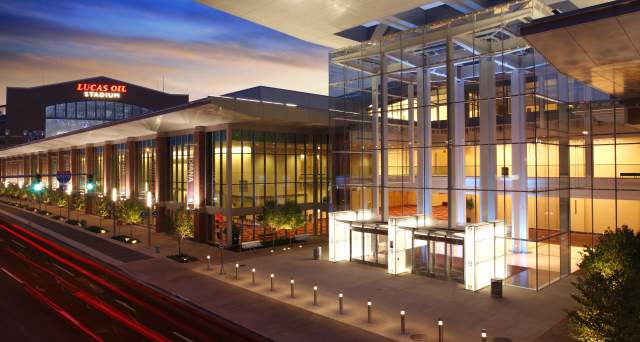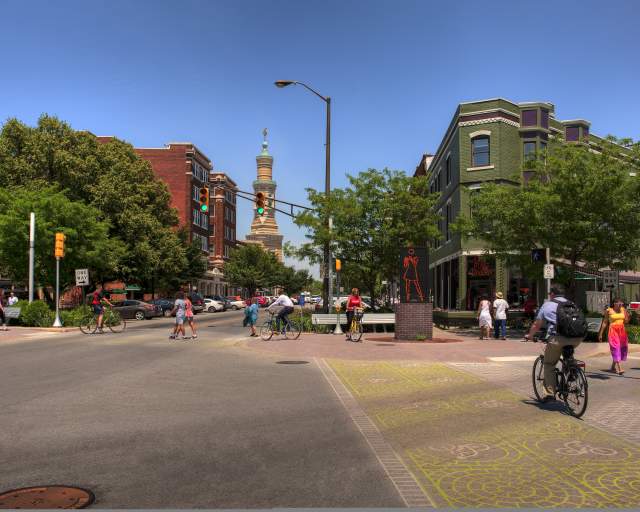Guest written by Judy Thomas, Deputy Mayor of Neighborhood Engagement for the City of Indianapolis
As we celebrate Indy’s Bicentennial Celebration and reflect on the past 200 years in the city we call home, I find myself once again longing for a deeper and more widespread understanding of the rich Black history we share here in the Circle City.
My Truth
As you learn more about Black history in Indy, you’ll face some hard lessons on how systemic racism and bigotry diminish meaningful preservation of once-vibrant neighborhoods. Obstacles such as redlining, discriminatory banking practices, inadequate and insufficient housing, busing and more have taken their toll on how we remember Black culture of decades past.
Yet, there is still much celebrate: From the once-bustling cultural district of Indiana Avenue – where Indy’s claim to musical fame in jazz had its start – to the many parks and public spaces now devoted to peace and equity for all. Black culture is just as vibrant and alive in Indy as it once was, a point of hope as we move forward into the 21st century.

My Tips
Download the Kennedy King Memorial Initiative’s Black History and Culture in Indy Interactive Map. This unique mapping tool allows you to select a location of interest, learn about its history and contributions to Black culture in Indianapolis, and plan your visit.
You could also take a public art tour, exploring works representing Black history in Indy, including Indy local Michael "Alkemi" Jordan’s mural of Mari Evans, John Spaulding’s sculpture of jazz musicians, or Talking Wall by Bernard Williams.
 Or, book a reservation on Sampson Levingston’s Through 2 Eyes walking tours, as he takes you through the sites and sounds of historic Indiana Avenue.
Or, book a reservation on Sampson Levingston’s Through 2 Eyes walking tours, as he takes you through the sites and sounds of historic Indiana Avenue.
One more idea: get to know the jazz musicians that made their start here in Indy, such as Wes Montgomery, James Spaulding, and Larry Ridley.
My Advice
The first step to understanding Indy’s Black history is to experience it. The walkability of these places and spaces in Circle City is beckoning you to head out and explore. And as you plan this journey to discover our Black history in Indy, here are few highlights from what you can expect to find:
- Bethel A.M.E: This former church, once a stop on the Underground Railroad, had local chapters of the National Association for the Advancement of Colored People (NAACP).
- Center for Black Literature and Culture at the Indianapolis Public Library: An initiative of the Indianapolis Public Library celebrates the literary and cultural contributions of African Americans in Indy and elsewhere. Located inside the beautiful, historic Central Library.
- Crispus Attucks Museum: Crispus Attucks, a Black man, was the first person to die in the Revolutionary War. The first all African-American high school in Indy was named in his honor in 1927, and you can view memorabilia from this time of segregation at this downtown Museum. The museum is dedicated to alums and teachers who had an impact on Indianapolis, Indiana, and American history.
- Frederick Douglass Park: Now a 43-acre public space, 100 year-old Douglass Park was originally a gathering place for Black Americans on the Eastside. The park was a byproduct of systemic segregation and was the sole park for African Americans in Indy in the first half of the 20th century.
- Indiana Avenue: Home to the Madam Walker Legacy Center, Indiana Avenue was the mecca of a popular jazz scene that lasted from the 1880s through the 1970s. At the height of its jazz era, “The Avenue” featured over 33 jazz clubs with headliners including Duke Ellington, Ella Fitzgerald, Nat King Cole, and more.
- Indiana Federation of Colored Women’s Clubs: Lillian Thomas Fox, a reporter and correspondent editor for the Indianapolis Freeman, founded the Indiana Federation of Colored Women’s Clubs in 1904. She was later hired by Indianapolis News, becoming the first Black woman to work as a full-time journalist for a white, mainstream Indiana newspaper, and paved the way for many African American women's organizations to take root in Indy.
- Indiana Historical Society: Head to this stunning cultural institution, full of genealogical records and historical artifacts, and meet Madam C.J. Walker in the Indiana Historical Society’s “You Are There 1915: Madam C.J. Walker Empowering Women.”
My Hope
Black history and African American achievements have played an undeniable role in the growth in Indianapolis. Indy was a manufacturing and business destination, a jazz mecca, and cultural hot spot thanks to the accomplishments of our Black predecessors. By experiencing Black history in Indy, I hope you come to understand just how colorful and vibrant Black culture has been and is today.



